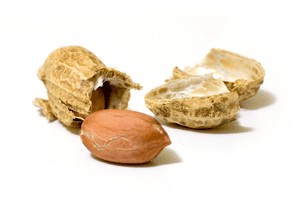
 |
|||||
|
|
|
|
|
|
|
Classic Peanut CuisineBy William I. Lengeman III |
|
|
If one begins eating peanuts, one cannot stop. (H.L. Mencken)
Peanuts, like a woman of bad reputation, have been loved by many but never really respected. Even today, the South's beloved pindars and goobers rarely rise above their humble station as fodder for airline passengers or an ingredient in that kiddie cuisine staple - the peanut butter and jelly sandwich. With the precipitous rise in peanut allergies in the past few decades, the humble legume has even been subject to the ultimate insult - peanut-free zones. Native pre-Columbian peoples of the Americas ate peanuts regularly and some ancient Peruvians respected them enough to use them in their sacred rites. It may have been this association with indigenous peoples that caused Europeans to almost immediately adopt a bias toward them. Gonzalo Fernández de Oviedo y Valdés, the first European to write about peanuts, said, "the Christians do not use it unless they are unmarried males or children, or slaves and common people, who do not pamper their taste. It has a very mediocre taste and little substance." Portuguese sailors took peanuts to Africa, where they were adopted as an ingredient in soups and stews. When goobers - a word which, like pindar, was derived from the Congolese language - came with slaves to North America they were scorned as "synonyms of circus rowdyism, gallery gods' obstreperousness, and festive occasions of the proletariat," and were only deemed suitable for livestock and slaves. |

The peanut's innate charms won out and it gradually gained on a place in "respectable" cuisine. In the 1838 edition of Directions for Cookery in its Various Branches, popular cookbook author Miss Eliza Leslie recommended substituting them for coconut in "macaroons" and offered advice on roasting "Ground-Nuts". Peanut recipes turned up more often in nineteenth century cookbooks and boiled peanuts and Smithfield hams, originally derived from peanut-fed hogs, became Southern staples. Commercial manufacture of peanut butter began in the 1890s, courtesy of eccentric corn flake co-inventor, Dr. John Harvey Kellogg, who was awarded the first patents for the substance. Peanut butter was initially used as a substitute for dairy butter and as a sandwich spread, but by 1920 the USDA was publishing recipes for entrees like Scalloped Rice with Peanut-Butter Sauce and Peanut-Butter Omelets. Four years earlier Peanut Man George Washington Carver published How to Grow the Peanut and 105 Ways to Prepare it for Human Consumption, a collection of recipes devoted to peanuts. It marked the beginning of his peanut-fueled rise to the status of venerated American folk hero. As peanut butter became more popular, so did peanut and peanut butter candy. In 1926, Williamson Candy Company published 60 New Ways to Serve a Famous Candy, a recipe booklet centered around its nutty Oh Henry! bar. Among the featured recipes - Oh Henry! Stuffed Tomatoes, Fried Bananas with Oh Henry! Dressing and Oh Henry! Fritters. Recipes for Baby Ruth Cookies appeared in Curtiss Candy Company advertising during World War II. |
Peanut RecipesFrom How to Grow the Peanut and 105 Ways of Preparing it for Human Consumption
|
|
No. 11, Aunt Nellie's Peanut Brown Bread
No. 28, Peanut Doughnuts Number Two
No. 46, Peanut Macaroni and Cheese |
|
| Copyright © 2008 Epicurean.com |